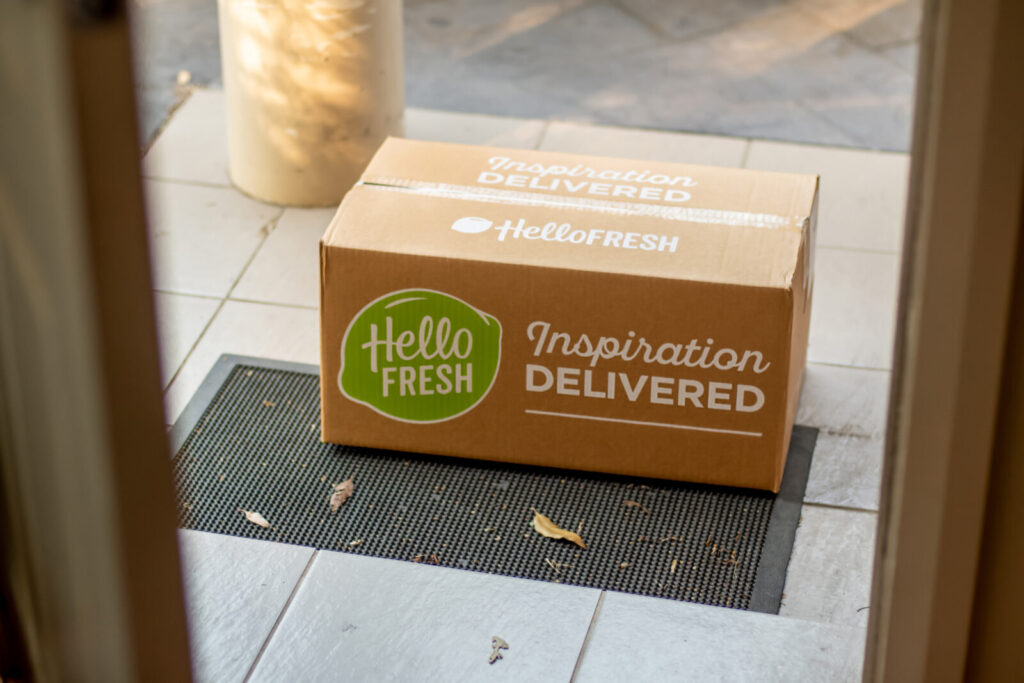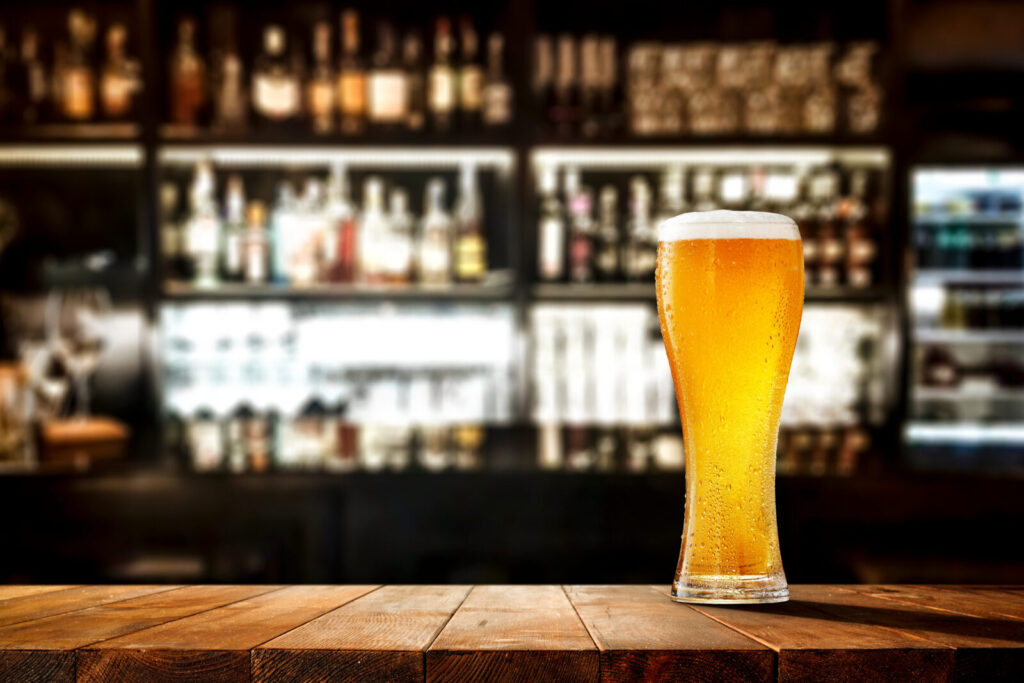Brief • 4 min Read
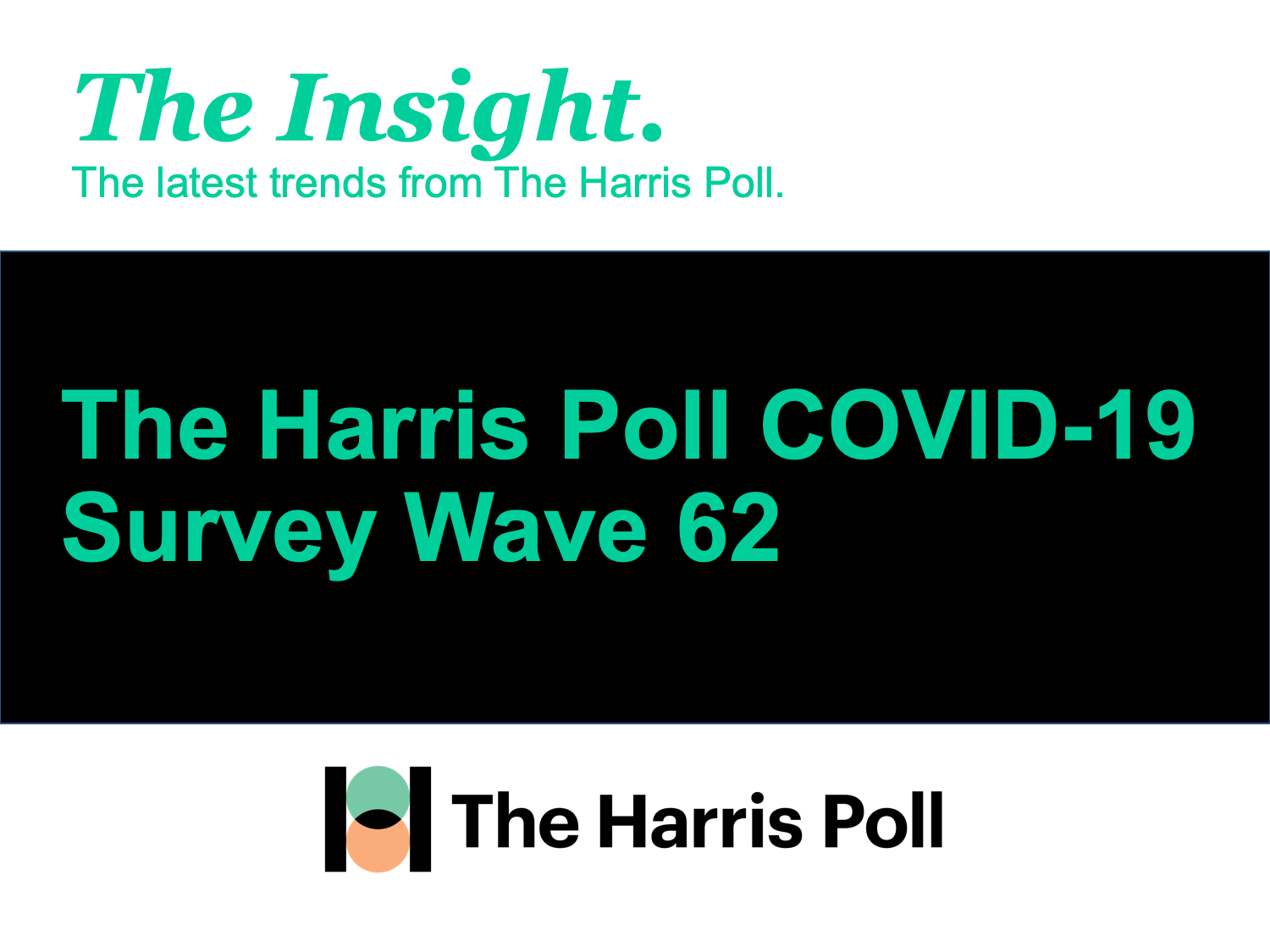
In The Harris Poll COVID-19 Tracker (Week 62) fielded April 30th to May 2nd, 2021 among 2,096 U.S. adults, we look at the layers to being vaccine hesitant, why Americans are skipping their second dose, what chronic health conditions means for Older Millennials, the biggest challenge remaining in fighting the pandemic, and what kids need to return to school.
As a public service, our team has curated key insights to help leaders navigate COVID-19. Full survey results, tables, and weekly summaries can be accessed for free at The Harris Poll COVID-19 Portal. We will continue to actively field on a regular cadence to track the shifts in sentiment and behaviors as the news and guidelines evolve.
There’s Not Just One Kind of Vaccine Hesitancy: Axios-Harris Poll
Our new survey with Axios, featured in Mike’s AM, looks at the hard work ahead convincing vaccine-hesitant. But there’s more than one type of hold-out, our research finds:
- With (56%) now having had one shot, the available pool of vaccine eager Americans is suddenly shrinking: In our new data over the weekend, of those remaining unvaccinated, (10%) said they’ll get the vaccine whenever they get around to it, and (21%) said they will wait awhile and see before getting the vaccine. And (14%) said they won’t get a vaccine.
- The ‘lowest-hanging fruit’ is now the one-in-ten Americans who aren’t vaccine-hesitant, per se, but procrastinating or not prioritizing it in their lives currently.
- Gen Z (30%) are more likely than their older generational counterparts to say they will get the vaccine whenever they get to it, while Black Americans (29%) are most likely to say they want to wait and see.
- Democrats and Republicans poll closely when it comes to those who say they will wait and see (20% vs 21%). But GOP members are twice as likely to say they will not get vaccinated (18% vs 8%).
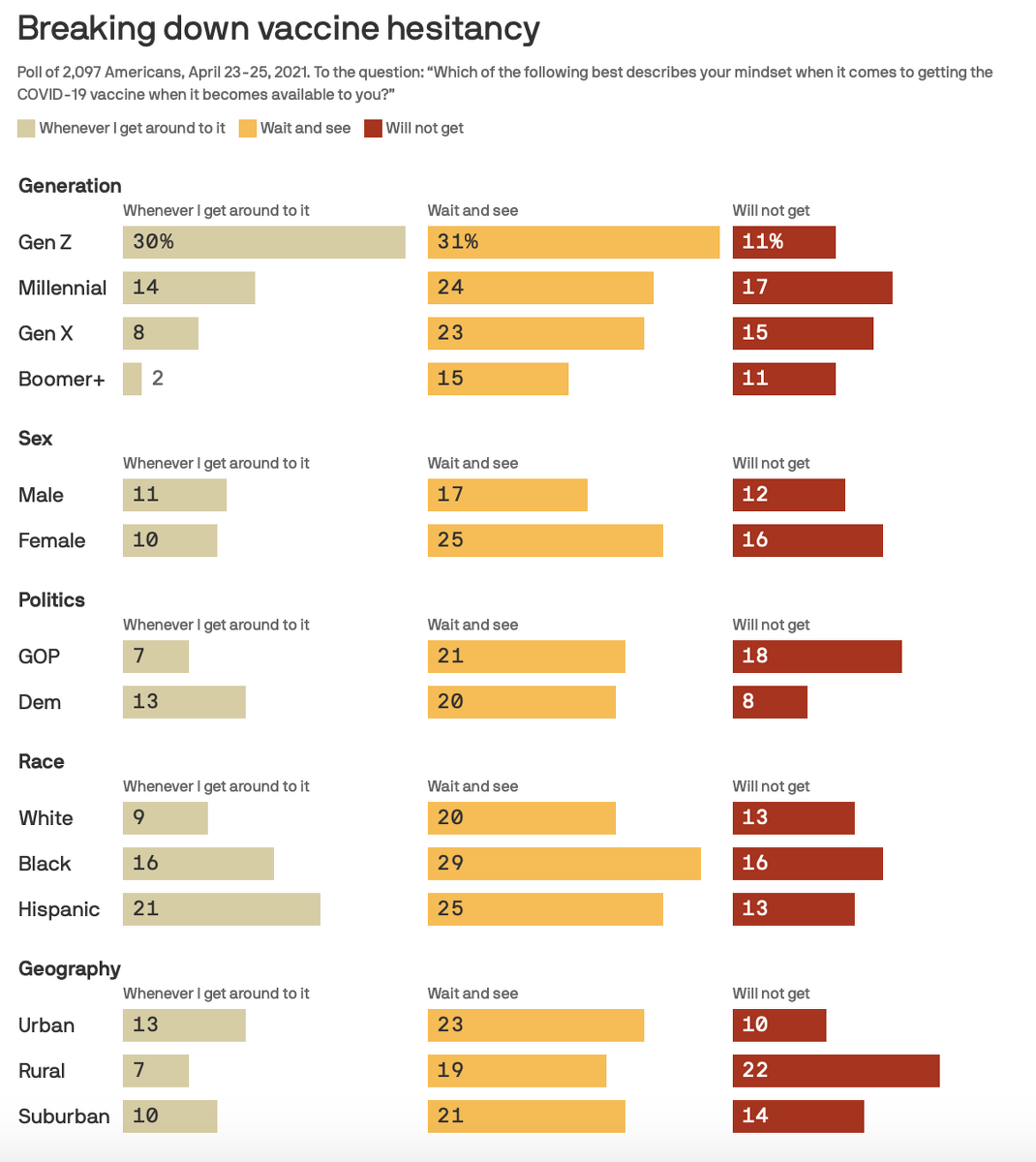
Takeaway: John Gerzema, CEO of The Harris Poll, says “As those Americans most eager to get the vaccine have now been able to do so, the hard part of earning the trust of those with hesitations or who don’t view it as a top priority begins.”
Why Are Americans Skipping Their Second Dose?
Millions of Americans are now fully vaccinated, but now, as some of the less eager line up to get their shots, we are seeing a spike in skipped second doses – why? Here’s what we found:
- One third (34%) report wanting to make sure they don’t have any negative side effects from the first dose and nearly a quarter (23%) say they think one dose is enough to keep them safe.
- Interestingly, Gen Z are more likely to prolong their second dose (23%), while those who fall under the “wait and see” vaccine plan are more likely to skip the second dose completely (19%).
- One shot isn’t enough: “There’s a 36-fold difference of getting fully vaccinated versus partially,” Dr. Anthony Fauci said at a news briefing Friday. And, what’s worse is, it’s possible to reach herd immunity, then lose it. Repeatedly.
- If second doses are a problem, what about booster shots? Two thirds (65%) report that they will get a booster shot every time they need one but (14%) say they will get one starting next year, and (9%) will only get a single booster this fall/winter.
- Companies are stepping in to make vaccinations easier such as Microsoft, Starbucks and Amazon who are offering the government assistance with logistics and operations. Meanwhile, others are getting creative like Miller Lite who is now offering “vax time tees” designed for “maximum ease” during vaccine appointments.
Takeaway: The harder fix here will be countering misconceptions around vaccinations. One approach in Colorado uses tactics from get-out-the-vote, utilizing phone bank volunteers with scripts to address questions about the vaccine and counter misinformation.
The Future For Older Millennials Suffering From Chronic Health Conditions: CNBC-Harris Poll
This week in our partnership series with CNBC “Middle-Aged Millennials,” we look at what the future holds for Older Millennials who are battling chronic health conditions. Here’s what we found
- Nearly half (44%) of Older Millennials report having at least one diagnosed chronic illness, with a quarter (26%) having two or more.
- What’s affecting Older Millennials? The top three conditions that Older Millennials are reporting are: migraines (26%), major depression (23%), asthma (19%).
- Older Millennials are most notably less likely than the general population to suffer from hypertension (15% vs 32%) and high cholesterol (25% vs 11%) and obesity (10% vs 13%).
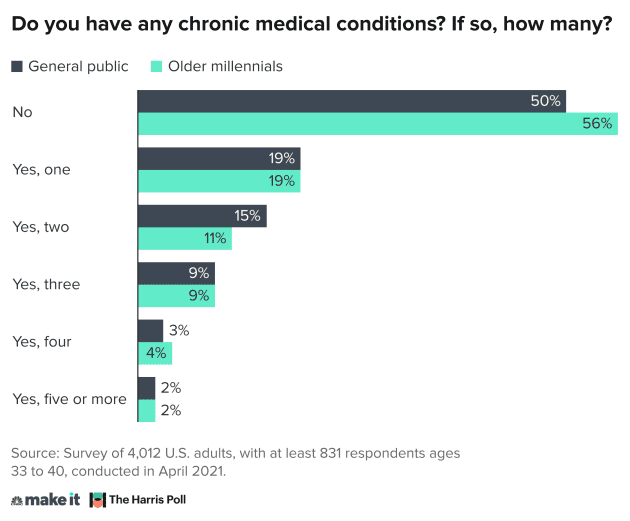
Takeaway: Dealing with increased chronic health conditions, Older Millennials are now facing new financial burdens as out-of-pocket costs continue to rise in addition to continuing to deal with the economic effects of the pandemic.
The Biggest Remaining Challenge in Stopping the Coronavirus: Slate-Harris Poll
America is dealing with a paradox, citizens want their freedom to live a mask-free life but at the same time are not willing to roll up their sleeves and get the vaccine. Slate takes a deep-dive into the latest Harris Poll data to understand where the disconnect is happening and why.
- Vaccine refusers were three times as likely as vaccinated people to say that they had become more lax about masks and social distancing. They were also nearly twice as likely to say they had slacked about avoiding crowds and limiting travel.
- When asked for reasons not to get the vaccine as soon as it becomes available, (13%) of refusers said “I don’t need to get it if enough people are vaccinated.”
- When thinking about “getting back to normal,” one third of vaccine refusers agreed that once enough people in their community get the vaccine, we will be at herd immunity.
Takeaway: The more Americans that do not get vaccinated, the higher the chances are that we see new mutations of the virus which means more cases of COVID, and in turn we get further from our already vulnerable goal of reaching herd immunity.
A Return To Normal Education Isn’t What Kids Need: Chicago Tribune-Harris Poll
Will Johnson, CEO of Harris Poll, discusses findings from our national survey that asked parents to assess their children’s experiences in grades K-8 over the past year, when almost all of them, at least as some point, were taught at home in this piece for the Chicago Tribune.
- Overwhelmingly, parents said they want their children in school with their teachers and classmates in the next academic year. Two-thirds would like in-person instruction to resume full time while only (6%) think full-time at-home instruction would be optimal.
- Parents say classroom education should be modified, but are conflicted about what is most needed. Three in 10 would like more focus on social skills, increased use of technology at home, more group work, smaller class sizes, increased use of technology in the classroom, and more homework.
- But almost as many parents (22%) want less homework. And while (23%) see the need for a faster-paced curriculum to make up for lost learning, another (23%) want a slower-paced curriculum to help their children readjust.
Takeaway: There’s no question that many children have suffered socially, emotionally, and intellectually over the past school year but there are benefits to remote learning and it would be a shame if we couldn’t find a way to take the best attributes of both to create a new, amplified way to learn.
Subscribe for more Insights
Subscribe to our newsletter for the latest trends in business, politics, culture, and more.
Download the Data
This survey was conducted online within the U.S. by The Harris Poll from April 30 to May 2, among a nationally representative sample of 2,096 U.S. adults.
Download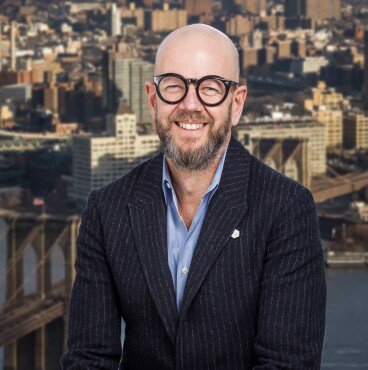
Subscribe for more Insights
Subscribe to our newsletter for the latest trends in business, politics, culture, and more.
Download the Data
This survey was conducted online within the U.S. by The Harris Poll from April 30 to May 2, among a nationally representative sample of 2,096 U.S. adults.
DownloadRelated Content






